Bromopentacarbonylrhenium(I)
Modify Date: 2024-01-06 18:55:13

Bromopentacarbonylrhenium(I) structure
|
Common Name | Bromopentacarbonylrhenium(I) | ||
|---|---|---|---|---|
| CAS Number | 14220-21-4 | Molecular Weight | 406.16100 | |
| Density | N/A | Boiling Point | N/A | |
| Molecular Formula | C5BrO5Re | Melting Point | 90ºC (subl.) | |
| MSDS | N/A | Flash Point | N/A | |
| Name | bromorhenium,carbon monoxide |
|---|---|
| Synonym | More Synonyms |
| Melting Point | 90ºC (subl.) |
|---|---|
| Molecular Formula | C5BrO5Re |
| Molecular Weight | 406.16100 |
| Exact Mass | 405.84900 |
| Water Solubility | Insoluble in water. |
Synonym:Bromopentacarbonylrheniu Section 2 - COMPOSITION, INFORMATION ON INGREDIENTS
Risk Phrases: 20/21/22 Section 3 - HAZARDS IDENTIFICATION EMERGENCY OVERVIEW
Harmful by inhalation, in contact with skin and if swallowed.Air sensitive.Moisture sensitive. Potential Health Effects Eye: May cause eye irritation. Skin: May cause skin irritation. Harmful if absorbed through the skin. Ingestion: Harmful if swallowed. May cause irritation of the digestive tract. Inhalation: Harmful if inhaled. May cause respiratory tract irritation. Chronic: Not available. Section 4 - FIRST AID MEASURES Eyes: Flush eyes with plenty of water for at least 15 minutes, occasionally lifting the upper and lower eyelids. Get medical aid. Skin: Get medical aid. Flush skin with plenty of water for at least 15 minutes while removing contaminated clothing and shoes. Ingestion: Get medical aid. Wash mouth out with water. Inhalation: Remove from exposure and move to fresh air immediately. If not breathing, give artificial respiration. If breathing is difficult, give oxygen. Get medical aid. Notes to Physician: Section 5 - FIRE FIGHTING MEASURES General Information: As in any fire, wear a self-contained breathing apparatus in pressure-demand, MSHA/NIOSH (approved or equivalent), and full protective gear. Extinguishing Media: Use water spray, dry chemical, carbon dioxide, or chemical foam. Section 6 - ACCIDENTAL RELEASE MEASURES General Information: Use proper personal protective equipment as indicated in Section 8. Spills/Leaks: Vacuum or sweep up material and place into a suitable disposal container. Section 7 - HANDLING and STORAGE Handling: Avoid breathing dust, vapor, mist, or gas. Avoid contact with skin and eyes. Storage: Store in a cool, dry place. Store in a tightly closed container. Store under nitrogen. Section 8 - EXPOSURE CONTROLS, PERSONAL PROTECTION Engineering Controls: Use adequate ventilation to keep airborne concentrations low. Exposure Limits CAS# 14220-21-4: Personal Protective Equipment Eyes: Not available. Skin: Wear appropriate protective gloves to prevent skin exposure. Clothing: Wear appropriate protective clothing to prevent skin exposure. Respirators: Follow the OSHA respirator regulations found in 29 CFR 1910.134 or European Standard EN 149. Use a NIOSH/MSHA or European Standard EN 149 approved respirator if exposure limits are exceeded or if irritation or other symptoms are experienced. Section 9 - PHYSICAL AND CHEMICAL PROPERTIES Physical State: Crystals Color: off-white Odor: Not available. pH: Not available. Vapor Pressure: Not available. Viscosity: Not available. Boiling Point: Not available. Freezing/Melting Point: Not available. Autoignition Temperature: Not available. Flash Point: Not available. Explosion Limits, lower: Not available. Explosion Limits, upper: Not available. Decomposition Temperature: Solubility in water: Insoluble. Specific Gravity/Density: Molecular Formula: C5BrO5Re Molecular Weight: 406.16 Section 10 - STABILITY AND REACTIVITY Chemical Stability: Not available. Conditions to Avoid: Incompatible materials, exposure to air, exposure to moist air or water. Incompatibilities with Other Materials: Oxidizing agents, halogens, active metals. Hazardous Decomposition Products: Carbon monoxide, carbon dioxide, hydrogen bromide. Hazardous Polymerization: Will not occur. Section 11 - TOXICOLOGICAL INFORMATION RTECS#: CAS# 14220-21-4 unlisted. LD50/LC50: Not available. Carcinogenicity: Rhenium pentacarbonyl bromide - Not listed by ACGIH, IARC, or NTP. Section 12 - ECOLOGICAL INFORMATION Section 13 - DISPOSAL CONSIDERATIONS Dispose of in a manner consistent with federal, state, and local regulations. Section 14 - TRANSPORT INFORMATION IATA Shipping Name: TOXIC SOLID, ORGANIC, N.O.S.* Hazard Class: 6.1 UN Number: 2811 Packing Group: III IMO Shipping Name: TOXIC SOLID, ORGANIC, N.O.S. Hazard Class: 6.1 UN Number: 2811 Packing Group: III RID/ADR No information available. Section 15 - REGULATORY INFORMATION European/International Regulations European Labeling in Accordance with EC Directives Hazard Symbols: XN Risk Phrases: R 20/21/22 Harmful by inhalation, in contact with skin and if swallowed. Safety Phrases: S 36/37 Wear suitable protective clothing and gloves. WGK (Water Danger/Protection) CAS# 14220-21-4: No information available. Canada None of the chemicals in this product are listed on the DSL/NDSL list. CAS# 14220-21-4 is not listed on Canada's Ingredient Disclosure List. US FEDERAL TSCA CAS# 14220-21-4 is not listed on the TSCA inventory. It is for research and development use only. SECTION 16 - ADDITIONAL INFORMATION N/A |
| Hazard Codes | Xn:Harmful; |
|---|---|
| Risk Phrases | R20/21/22 |
| Safety Phrases | S36/37 |
| RIDADR | UN 3288 6 |
| WGK Germany | 3 |
| Packaging Group | II |
| Hazard Class | 6.1 |
| HS Code | 29310099 |
| Precursor 10 | |
|---|---|
| DownStream 6 | |
| [Re(CO)5Br] |
| MFCD00013295 |
| [rhenium(pentacarbonyl)(bromide)] |
| bromorhenium |
| [ReBr(CO)5] |
| Pentacarbonylrhenium bromide |
| Pentacarbonylbromorhenium |
| bromopentacarbonylrhenium |
| EINECS 238-084-8 |
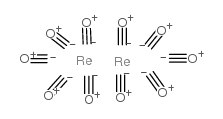 CAS#:14285-68-8
CAS#:14285-68-8 CAS#:14099-01-5
CAS#:14099-01-5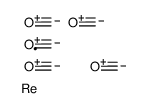 CAS#:14524-92-6
CAS#:14524-92-6 CAS#:598-73-2
CAS#:598-73-2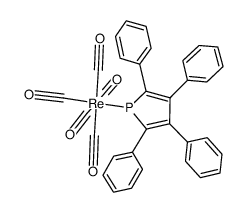 CAS#:71252-85-2
CAS#:71252-85-2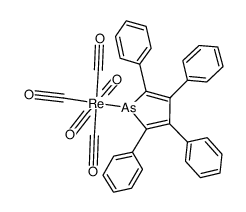 CAS#:41706-12-1
CAS#:41706-12-1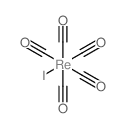 CAS#:13821-00-6
CAS#:13821-00-6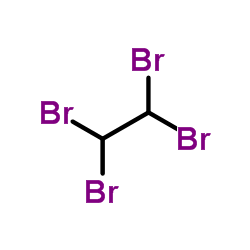 CAS#:79-27-6
CAS#:79-27-6 CAS#:10466-65-6
CAS#:10466-65-6 CAS#:10035-10-6
CAS#:10035-10-6 CAS#:1066-44-0
CAS#:1066-44-0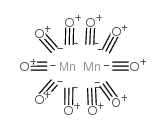 CAS#:10170-69-1
CAS#:10170-69-1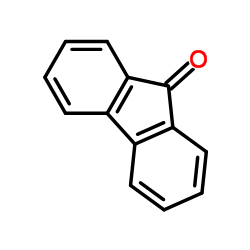 CAS#:486-25-9
CAS#:486-25-9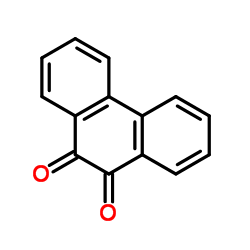 CAS#:84-11-7
CAS#:84-11-7